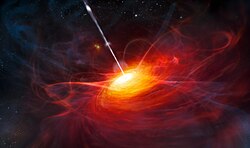| Discovery [1] | |
|---|---|
| Discovered by | Mount Lemmon Survey |
| Discovery site | Catalina Mountains north of Tucson, Arizona, USA |
| Discovery date | April 1, 2011 |
| Designations | |
| 2011 GA | |
| MPO 200327 | |
Apollo  NEO, PHA | |
| Orbital characteristics [2] | |
| Epoch 13 January 2016 (JD 2457400.5) | |
| Uncertainty parameter 5 | |
| Observation arc | 70 d |
| Aphelion | 2.8692 AU (429.23 Gm) |
| Perihelion | 0.73727 AU (110.294 Gm) |
| 1.80321 AU (269.756 Gm) | |
| Eccentricity | 0.59114 |
| 2.42 yr (884.44 d) | |
| 305.631° | |
| 0° 24m 25.33s /day | |
| Inclination | 9.8282° |
| 200.4246° | |
| 109.750° | |
| Earth MOID | 0.00686464 AU (1,026,936 km) |
| Jupiter MOID | 2.51622 AU (376.421 Gm) |
| Physical characteristics | |
| Dimensions | 170–380 m [3] |
| 21.0 [2] | |
2011 GA is a small asteroid that is a Near-Earth object and an Apollo asteroid.


